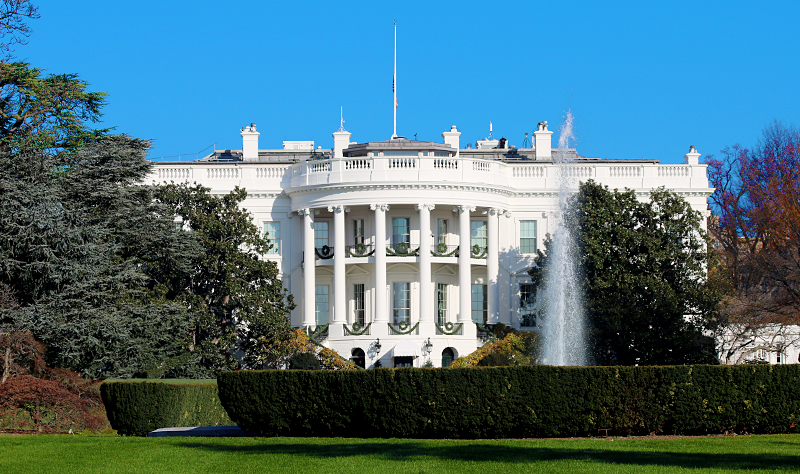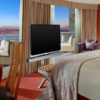As the home of presidents of the United States and their families since the year 1800 — when John Adams moved into the building, which was still unfinished — The White House has been an iconically important part of the landscape in the District of Columbia since George Washington selected the site in 1791…
…but did you know that at least five other designs of The White House were submitted for consideration as part of a competition?
In addition to the “sliders” with which the current design of The White House can be compared with each of those five entries, images of an aerial view and a front view of each design have also been included in this article.
I have been given express written permission to use the images and the verbatim text from this article written by G. John Vole for HouseFresh, which highlights what the White House could have looked like had any of the five other designs won that competition in 1792. While HouseFresh has endeavored to ensure the information provided is accurate and current, it cannot guarantee it. Neither HouseFresh nor The Gate accept liability for the information which is presented in this article.
5 Rejected White House Designs From a 1792 Competition
This is the White House as no-one has ever seen it.
In 1792, George Washington held a competition to design a house for the president. Winning architect James Hoban built the neoclassical mansion that would soon become known as the White House – and today its image is seared into the United States’ collective imagination.
But it could have looked very different. The president personally considered at least six designs, but the runners-up were immediately consigned to history. Many of the original drawings are archived at the Maryland Center for History and Culture, and three of these are not publicly available. HouseFresh has worked closely with the Maryland Center to access these alternative visions of the White House and recreate them in an exclusive new set of digital renders.
For the first time ever you can see how the White House could have looked like had a different competition entry been selected.
We talked to Vivien Barnett, Curatorial Assistant at the The Maryland Center for History and Culture, who gave us some insight into what it takes to preserve these plans:
“The plans are currently housed in custom-made archival storage mounts. We use acid-free archival boards to sandwich each drawing, and most have a custom cut mat that provides a window into the mount so the object is still accessible in storage. Many are also covered with a sheet of mylar or acid-free tissue to provide further protection. Aside from that, they are stored in a closed flat-file unit in a temperature-controlled room.”
Out of the archive and realistically computer-generated, here are five visions of the White House that might have been.
Jefferson’s Plan for the White House
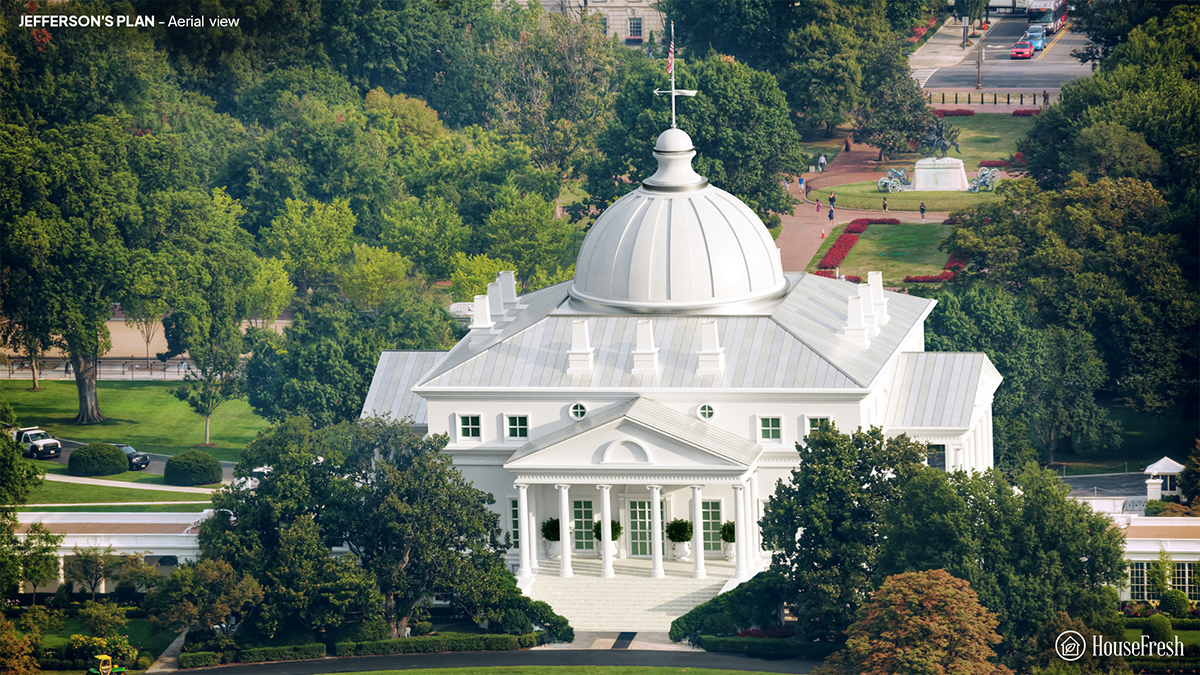
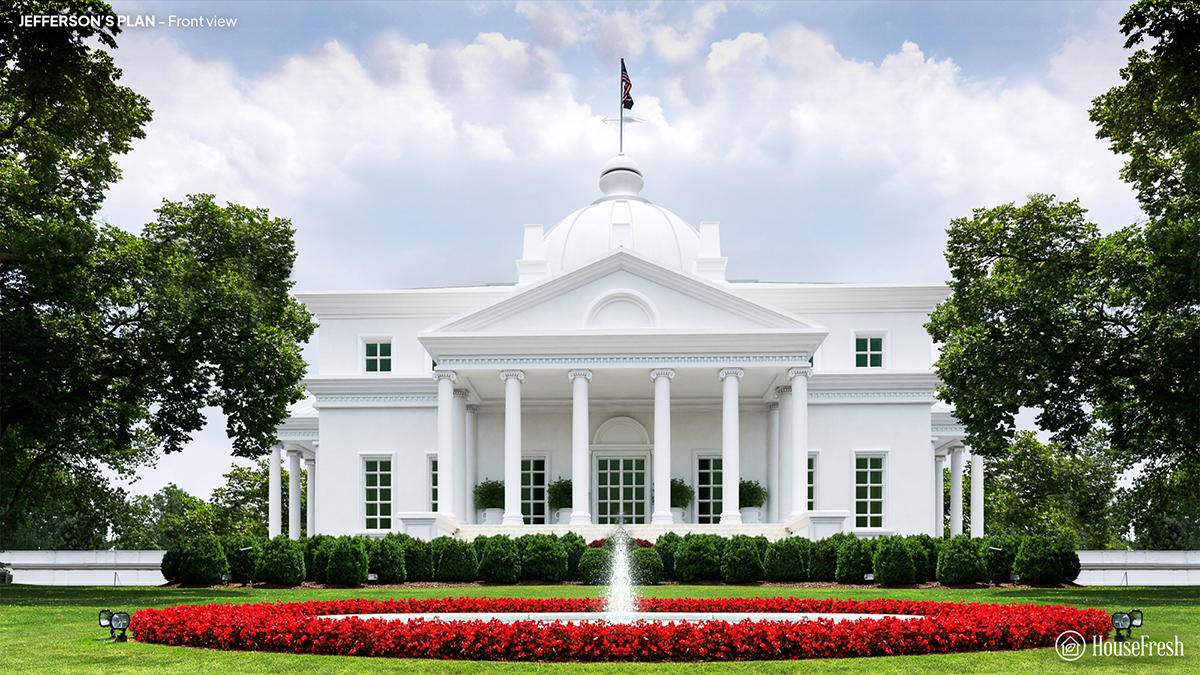
Jefferson’s Plan. ID 1976.88.6, RS2348_1976.88.6, 1976.88.8, RS8387_1976-88-9, RS8388_1976-88-10. Courtesy of the Maryland Center for History and Culture. mdhistory.org
Thomas Jefferson was Secretary of State at this time, and closely involved with the administration of the competition. But he was also an architect and enthusiast of classical European design. Experts attribute a losing entry labelled “Abraham Faws” to Jefferson. The ‘real’ Faws submitted his own, amateurish entry, and Jefferson’s anonymous design was later attributed to Faws due to a clerical error.
Jefferson’s Plan. ID 1976.88.6, RS2348_1976.88.6, 1976.88.8, RS8387_1976-88-9, RS8388_1976-88-10. Courtesy of the Maryland Center for History and Culture. mdhistory.org
Jefferson would move into the White House as president in 1801, describing the mansion as “big enough for two emperors, one Pope and the grand Lama.” All the same, he couldn’t help himself but expand on it, adding colonnades and other features to shape the White House as it now looks.
Philip Hart’s Plan for the White House
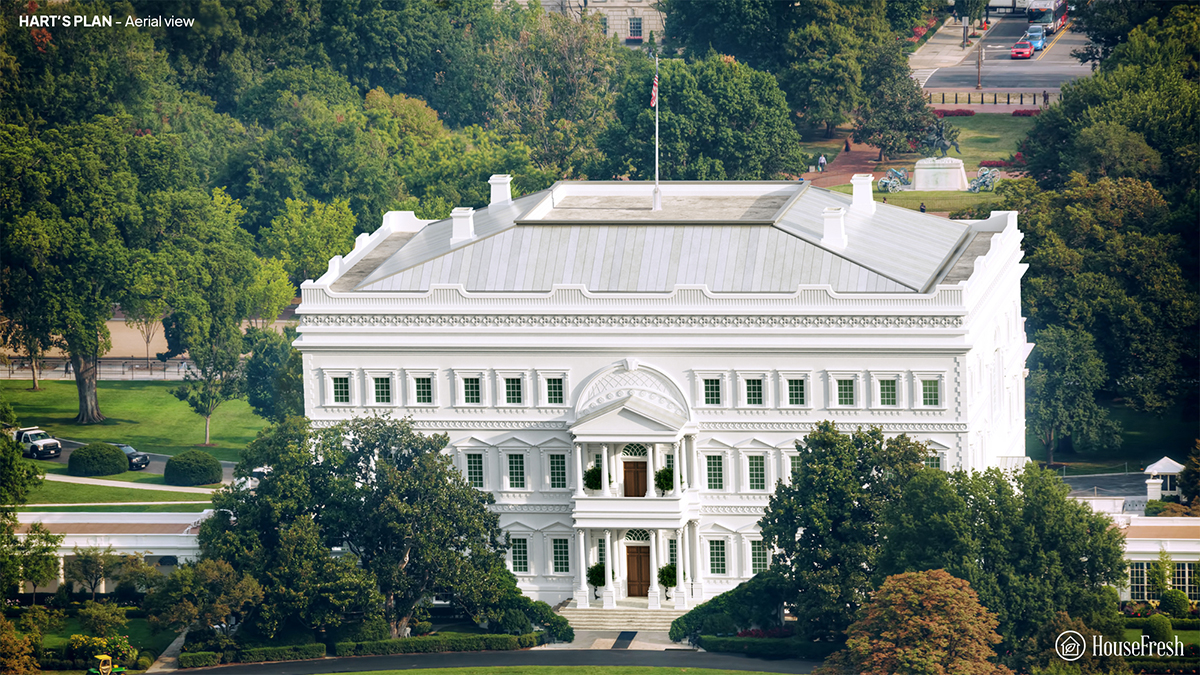
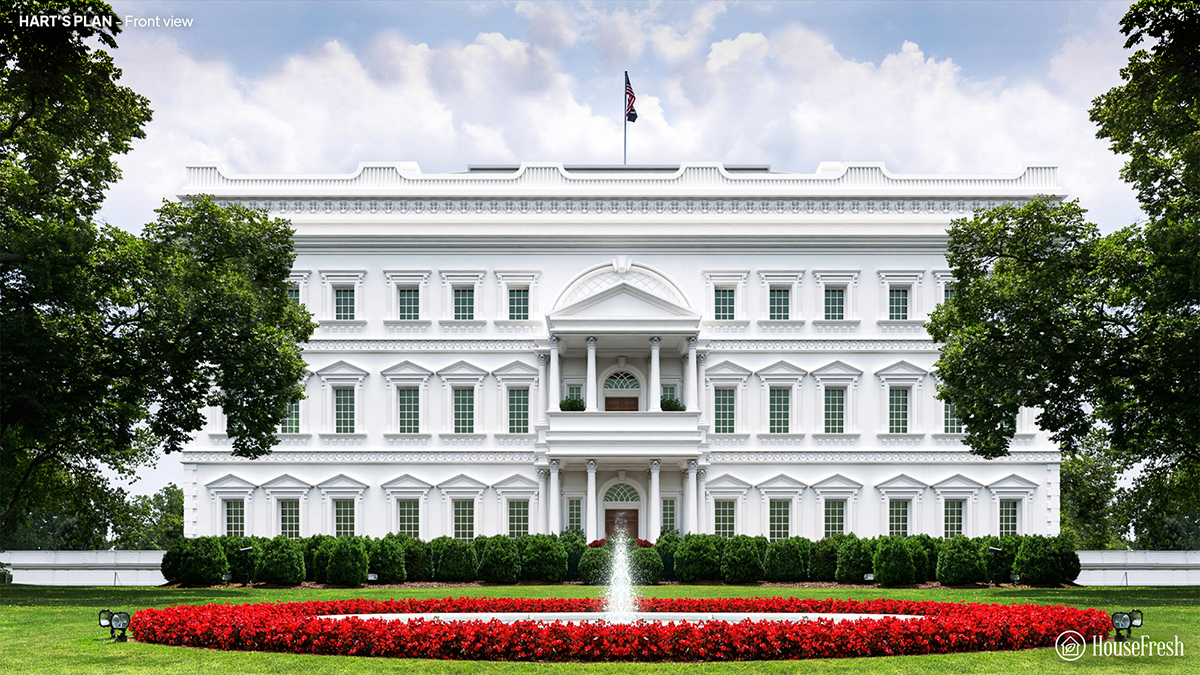
Hart’s Plan. ID 1976.88.15, 1976.88.16, 1976.88.17. Courtesy of the Maryland Center for History and Culture. mdhistory.org
The competition to design the White House was part of a broader challenge to suggest architecture for Washington’s seat of power. Phillip Hart was an amateur architect – more likely a professional builder – who submitted proposals for both the president’s house and the Capitol.
Hart’s Plan. ID 1976.88.15, 1976.88.16, 1976.88.17. Courtesy of the Maryland Center for History and Culture. mdhistory.org
Hart’s White House echoes his vaguely absurd Capitol sketches. The foreshortened top floor and faux-Renaissance style lacks the style and sophistication that Washington desired from a building that should, “in size, form, and elegance… look beyond the present day.”
Andrew Mayfield’s Plan
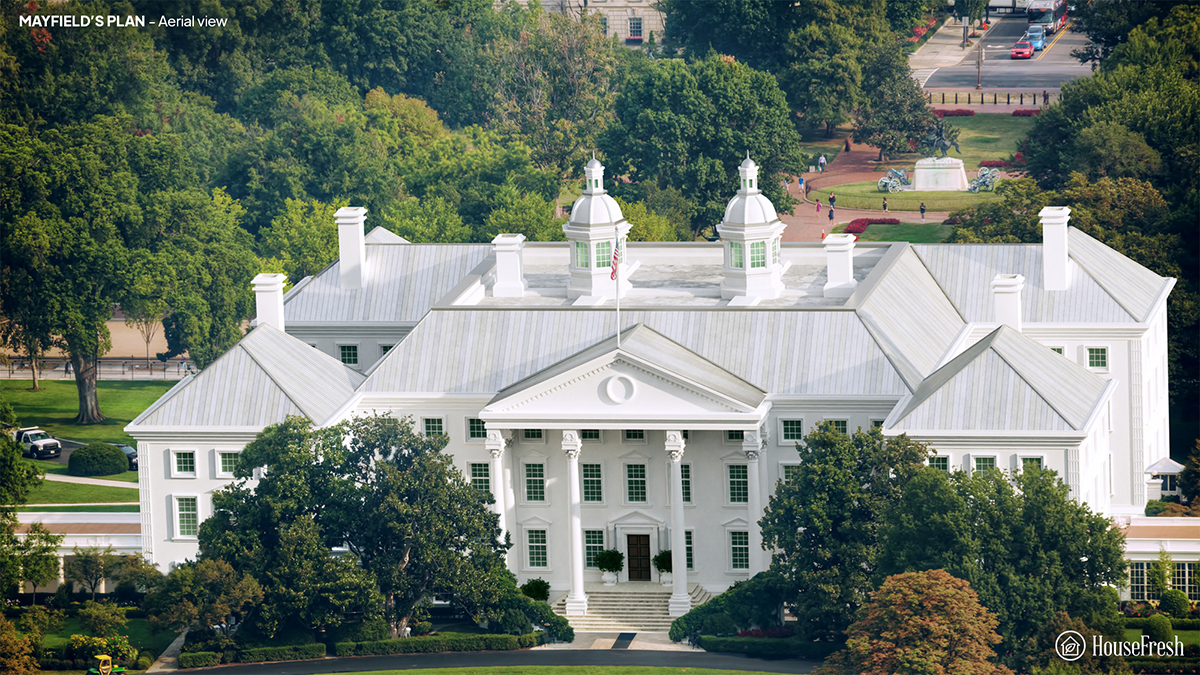
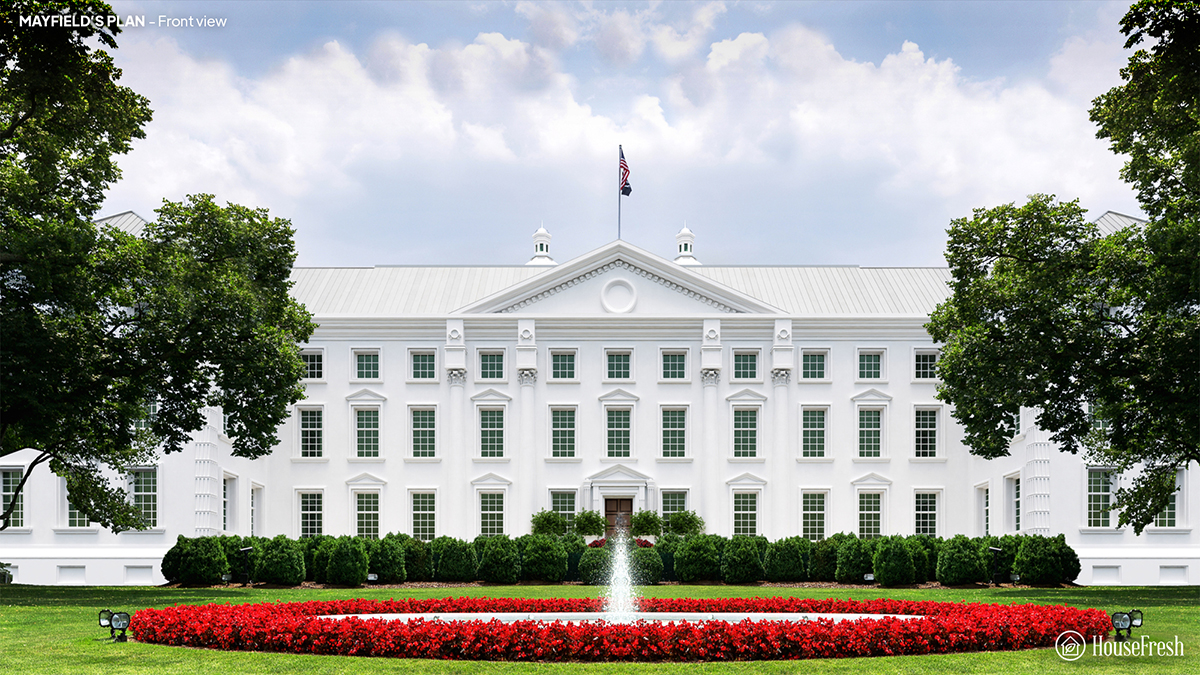
Mayfield’s Plan. ID 1976.88.22, 1976.88.23, 1976.88.24. Courtesy of the Maryland Center for History and Culture. mdhistory.org
Andrew Mayfield Carshores was a linguist and former British soldier and teacher. His simple design reflects pre-Revolutionary War architecture, characterized by America’s colonial period of Georgian, English-style buildings.
Mayfield’s Plan. ID 1976.88.22, 1976.88.23, 1976.88.24. Courtesy of the Maryland Center for History and Culture. mdhistory.org
Carshore’s steeply-pitched roofs are bordered with a lead walkway, with a rainwater reservoir in the roof of the main block. But to the judges, his work lacked a vital spark. According to architectural historian Hugh Howard, Carshore was a ‘gentleman amateur’ and his rejected entry may be the only building he ever designed.
Jacob Small’s Plan
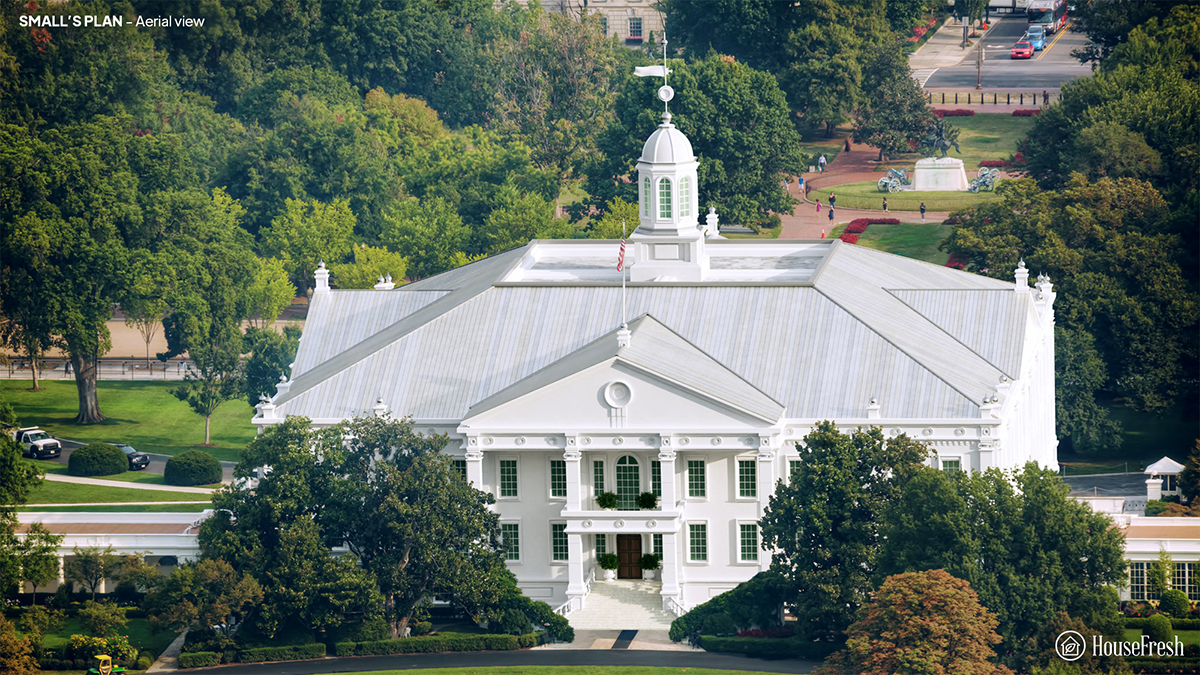
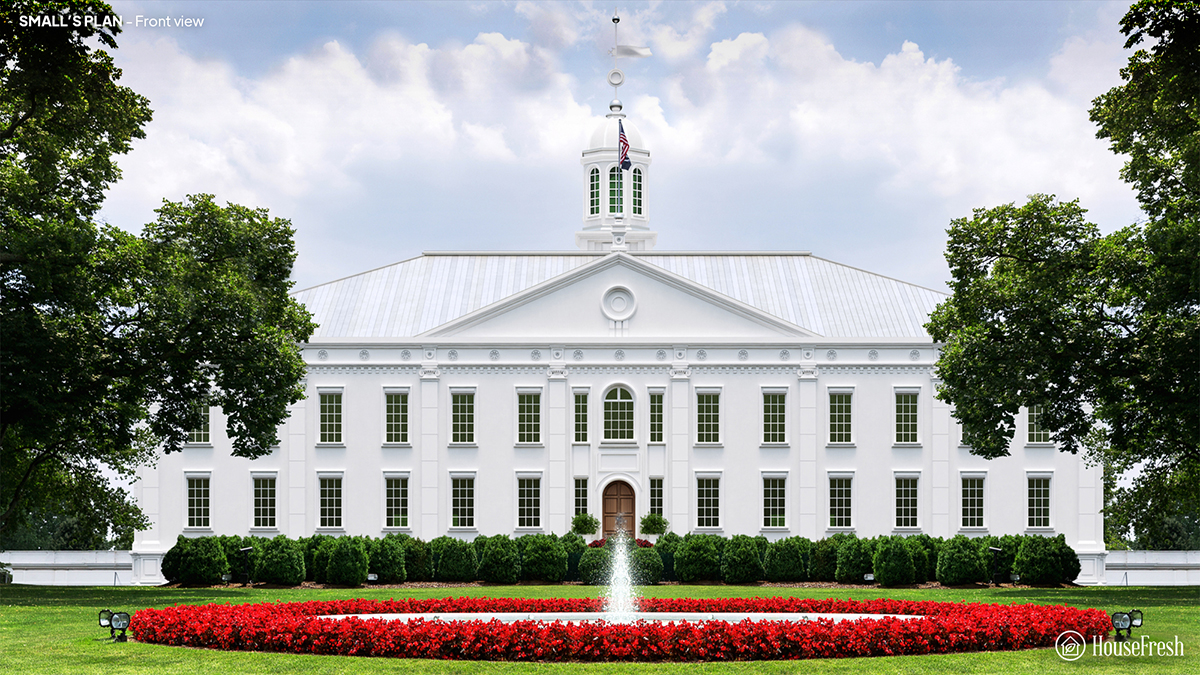
Small’s Plan. ID 1976.88.33, 1976.88.36, 1976.88.37, 1976.88.38. Courtesy of the Maryland Center for History and Culture. mdhistory.org
Jacob Small submitted four entries to the 1792 contest. Author Patrick Phillips-Shrock highlights that Small’s White House designs were thought to be inspired by two iconic buildings from that time: Mount Vernon, George Washington’s plantation estate house, and the Maryland State House in Annapolis.
Small’s Plan. ID 1976.88.33, 1976.88.36, 1976.88.37, 1976.88.38. Courtesy of the Maryland Center for History and Culture. mdhistory.org
Small connects the stable and kitchen blocks to the main house via arcades. But his maze-like interior of hallways and mysterious staircases would have been awkward for the president. Curiously, Small did anticipate oval-shaped rooms for the White House – but he failed to integrate them into his broader design in any meaningful way.
James Diamond’s Plan
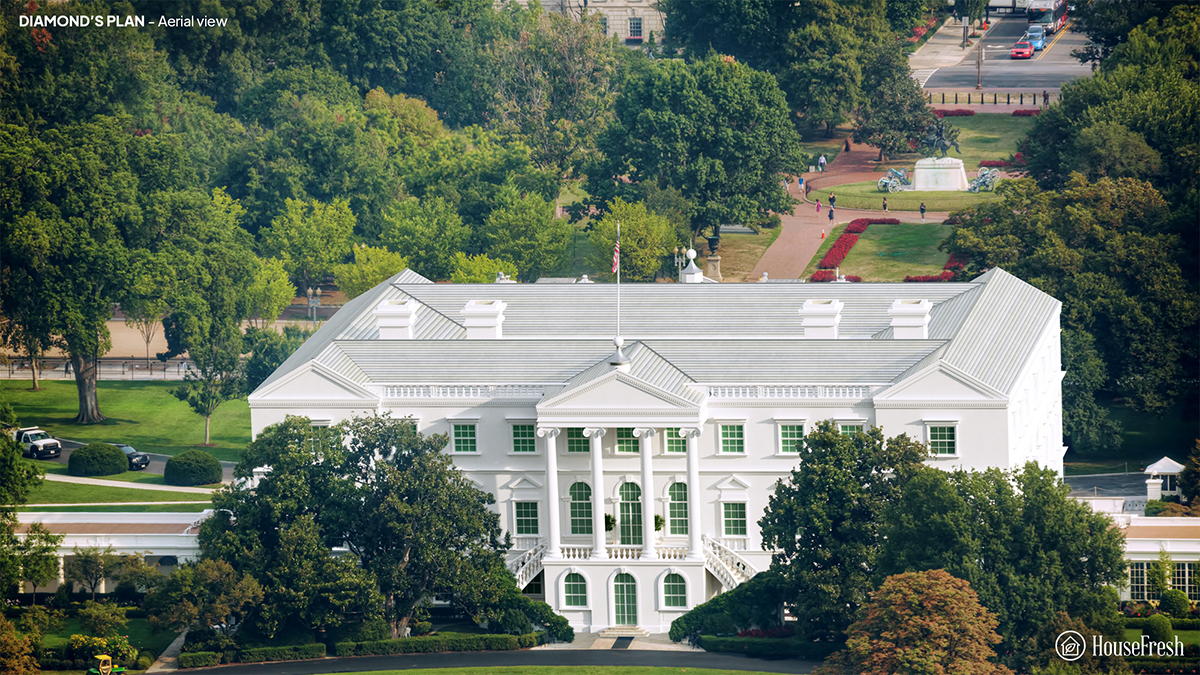
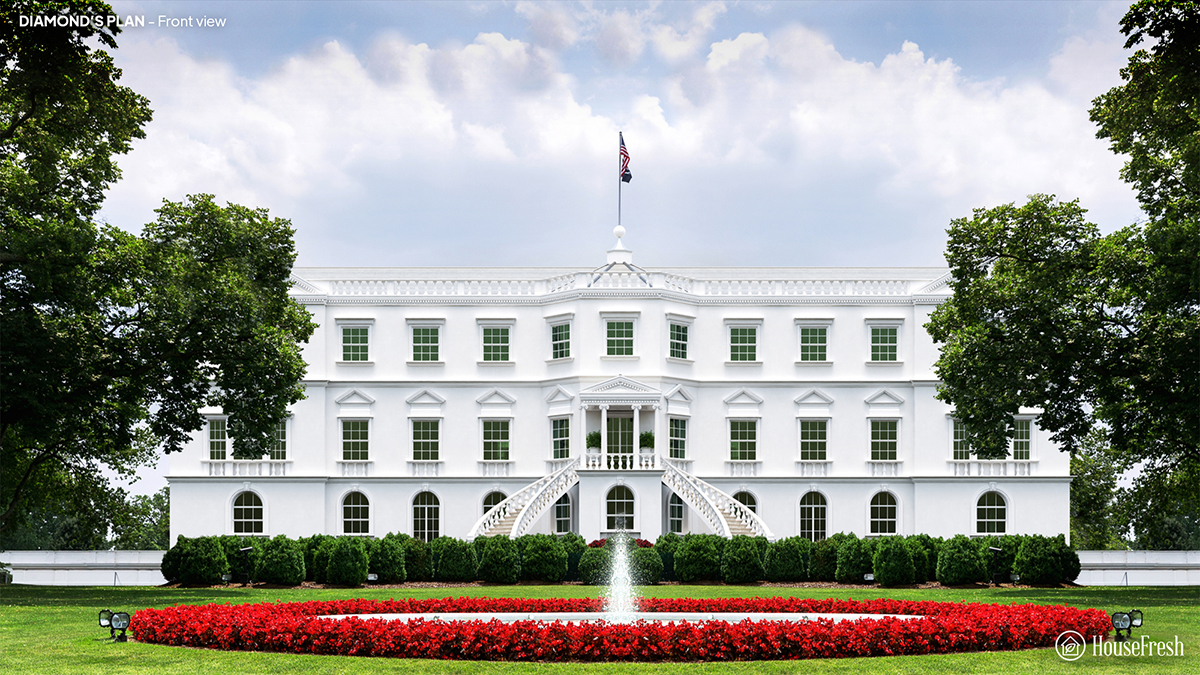
Diamond’s Plan. ID 1976.88.54, 1976.88.55, 1976.88.56. Courtesy of the Maryland Center for History and Culture. mdhistory.org
Originally from Ireland, James Diamond was an architect and builder. Diamond’s White House is set around a rectangular court. However, Diamond notes on his design that “the Open Court may be changed to a Picture Gallery and Lighted from the Top, which would have a grand Effect.”
Diamond’s Plan. ID 1976.88.54, 1976.88.55, 1976.88.56. Courtesy of the Maryland Center for History and Culture. mdhistory.org
Diamond’s design incorporates sophisticated design elements like Ionic columns and window frames capped with pediments. But the staircases are positioned inconveniently far from the entrance, and the overall grandness is thought to have been too ornate for George Washington’s tastes.
Insight into early American Architectural Imaginings
The contest to design the White House reflects democracy in America as it would evolve: the opportunity was open to everybody, but the prize went to a man whom the president already knew.
However, Hoban’s architectural proposal answered Washington’s requirements – and today, despite the additions and refinements over the years, it is hard to imagine the president’s house any other way. In fact, Hoban’s neoclassical structure would come to typify America’s federal architectural style. But HouseFresh’s digital renders of these archive blueprints are designed to help you picture how things could have been.
Methodology and Sources
All original plans are provided courtesy of the Maryland Center for History and Culture.
Phillips-Shrock, Patrick. (2013) The White House: An Illustrated Architectural History. North Carolina Mcfarland & Co, Inc.
William, C. Allen. (2005) History of the United States Capitol: A Chronicle of Design. Construction, and Politics. Washington. US Government Printing Office
Stillman, J. (2005) Six Houses for the President. USA. University of Pennsylvania Press.
Perezmonzon, J. (2021) Five Images of How the United States Capital Could Be. jjperezmonzon.com
Johan, D. (2020) How the US Capitol’s Design Was Chosen by Public Competition. history.howstuffworks.com
Facts About The White House
The following information was taken verbatim from the official Internet web site of The White House:
Every president since John Adams has occupied the White House, and the history of this building extends far beyond the construction of its walls. From the Ground Floor Corridor rooms, transformed from their early use as service areas, to the State Floor rooms, where countless leaders and dignitaries have been entertained, the White House is both the home of the President of the United States and his or her family, and a living museum of American history. The White House remains a place where history continues to unfold.
- There are 132 rooms, 35 bathrooms, and 6 levels in the Residence. There are also 412 doors, 147 windows, 28 fireplaces, 8 staircases, and 3 elevators.
- The White House kitchen is able to serve dinner to as many as 140 guests and hors d’oeuvres to more than 1,000.
- The White House requires 570 gallons of paint to cover its outside surface.
- At various times in history, the White House has been known as the “President’s Palace,” the “President’s House,” and the “Executive Mansion.”
- President Theodore Roosevelt officially gave the White House its current name in 1901.
Final Boarding Call
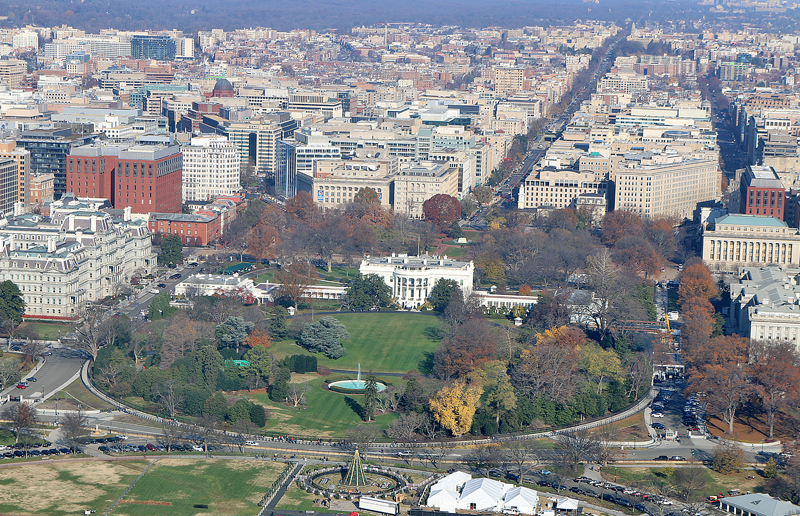
The White House was not the only building within the District of Columbia whose design was determined by a competition. As the heart of American political life in the District of Columbia, the “symbol of the American people and their government” known as the United States Capitol building in Washington was originally completed in the year 1800. The design of the building was chosen via a competition to design a meeting place for the Congress of the United States; and — as shown by the losing entries, which you can view in this article at The Gate — the Capitol could have looked very different.
Top photograph and photograph above ©2015 by Brian Cohen.
